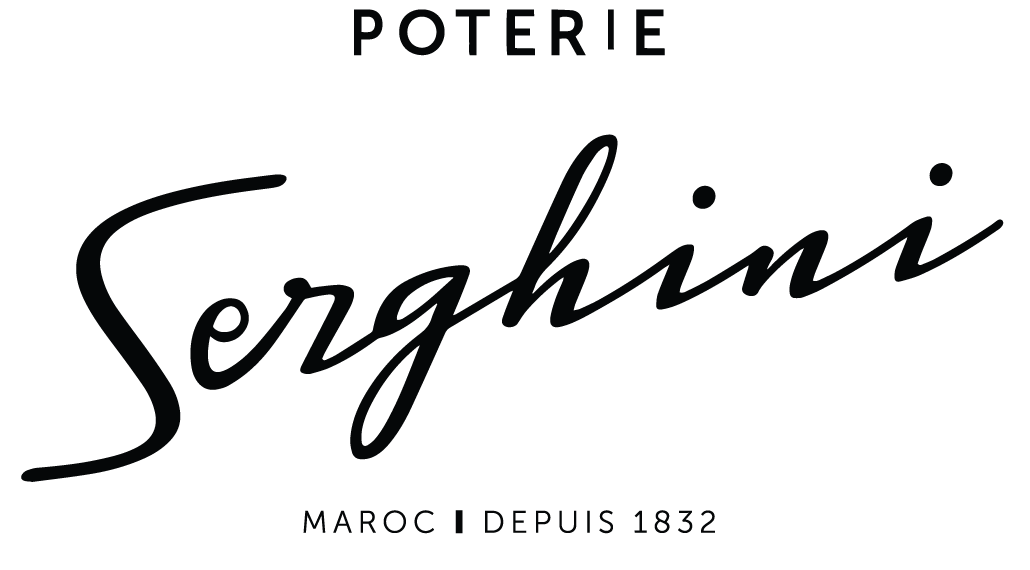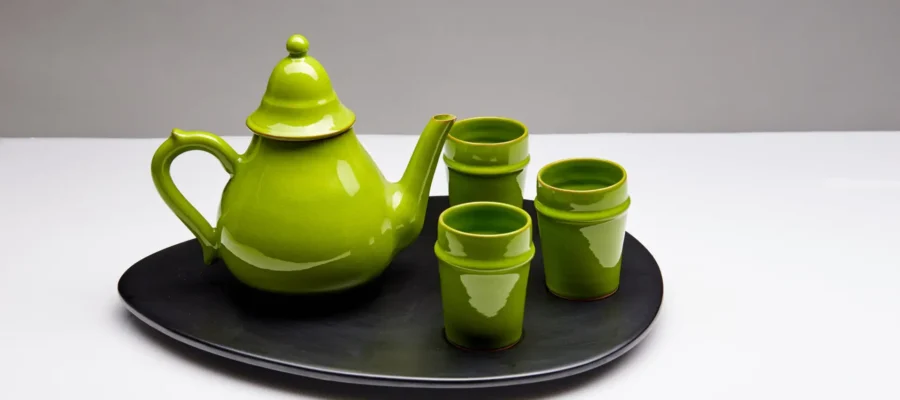Moroccan pottery, an ancient art, now stands at the crossroads of tradition and modernity. Facing contemporary environmental challenges, this millennial art form is now embracing more sustainable practices. At the heart of this transformation is a revolution in material choice, water management, and carbon footprint reduction.
Sustainable Material Choices in Moroccan Pottery
Moroccan pottery, rich in its cultural heritage, is increasingly oriented towards sustainable practices, especially in the choice of its materials. Central to this eco-friendly approach is the use of local clay. In Morocco, clay is often extracted in traditional, environmentally respectful ways. Moroccan potters prioritize clay sources close to their workshops, thus reducing the carbon footprint associated with transport and strengthening their connection to their local environment.
The glazes used in Moroccan pottery are also undergoing an ecological evolution. Artisans are increasingly turning to natural glazes, eliminating toxic compounds such as lead. They utilize local minerals and plant ashes to create a palette of natural colors, reflecting the richness of Moroccan soil. This approach not only preserves the health of artisans and users but also contributes to a unique and authentically Moroccan aesthetic.
Innovation in sustainable materials is also present. Some potters experiment with ecological additives or alternative materials to reduce their environmental impact. For example, the integration of recycled materials or the reuse of pottery debris in new creations are practices gaining popularity. These methods help reduce waste and offer a second life to materials.
Water Management and Recycling
Pottery as an art requires considerable water use, whether for clay mixing, shaping, or cleaning tools and work surfaces. Moroccan artisans, aware of the importance of preserving this precious resource, adopt innovative and traditional methods to reduce their water consumption.
A common practice is water reuse. In many traditional Moroccan workshops, water used for washing clay or tools is collected in basins. This water is then filtered and reused, reducing the need for fresh water. This recycling system not only conserves water but also allows for the recovery of clay residues, which can be reintegrated into the production process.
Clay recycling represents another important dimension of eco-responsibility in Moroccan pottery. Clay scraps and failed pieces, far from being considered waste, are seen as valuable resources. These residues are collected, moistened, and reused, thus creating an almost waste-free production cycle, which reduces environmental impact while being economically beneficial for artisans.
In some regions of Morocco, where water is particularly scarce, potters have developed techniques to further minimize their water use. For example, they use dry shaping methods or finishing techniques that require less water. These adaptations are not only responses to environmental challenges but also shape the style and unique characteristics of Moroccan pottery.
Reducing Carbon Footprint
Firing, a crucial step in pottery making, is traditionally one of the most energy-consuming. To address this, innovative initiatives are emerging. The use of gas kilns, which offer better energy efficiency and more precise temperature control compared to traditional wood-fired kilns, is becoming widespread. Some workshops even experiment with solar kilns, a promising alternative that leverages Morocco’s sunny climate to reduce fossil fuel consumption.
The selection of local materials also plays a key role in reducing the carbon footprint. By favoring clay extracted from local deposits and using natural materials for glazes, potters significantly reduce emissions related to transport. This approach has the additional advantage of supporting local economies and strengthening the bond between artisans and their natural environment.
Moroccan potters adopt optimized production methods to reduce energy waste. Techniques such as grouping pieces for a single firing or improving kiln insulation allow for more rational energy use. These practices, in addition to reducing the carbon footprint, contribute to the sustainability of the workshop by lowering production costs.
Moroccan pottery, in adopting these sustainable practices, not only responds to the ecological imperatives of our time but also redefines its identity and place in the modern world. Workshops like Poterie Serghini play a leading role in this transformation, combining artisanal excellence with an eco-responsible approach. By reconciling respect for the environment and fidelity to its roots, Poterie Serghini and similar workshops demonstrate that it is possible to combine traditional art and environmental consciousness. These efforts, far from being superficial, reflect a deep commitment to environmental preservation and the valorization of a rich and living cultural heritage. Thus, each piece from Poterie Serghini becomes a symbol of this harmony between ancestral craftsmanship and a sustainable future, embodying the spirit of eco-responsibility in Moroccan pottery.




